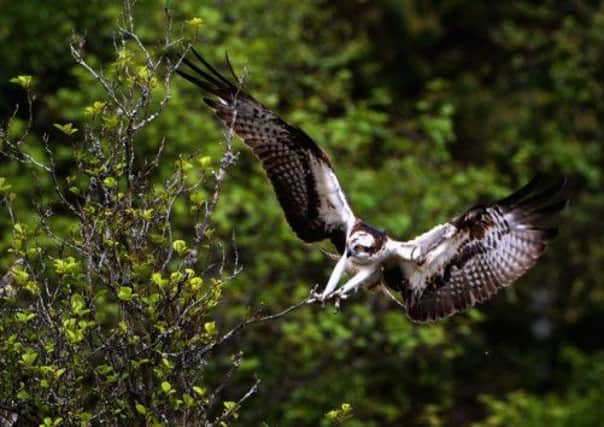Loch of Lowes osprey’s record 50th chick migrates


The chick, known as BlueYZ, was the centre of worldwide attention earlier this summer when its mother, the 28-year-old raptor affectionately known as Lady, defied all the odds by fledging her 50th chick at her nesting site at the Loch of the Lowes Reserve.
Lady had staggered wildlife watchers earlier this year when she returned to her nest at the end of March for a record 23rd year. She laid four eggs, but only one chick, Blue YZ, successfully fledged.
Advertisement
Hide AdAdvertisement
Hide AdLady set out early last month on what wildlife watchers fear may be her last 3000-mile flight back to Africa. The Scottish Wildlife Trust, the conservation charity in charge of the Loch of the Lowes reserve, today confirmed that BlueYZ has also left the nest at the trust’s Visitor Centre .
A spokeswoman for the charity said: “Recently, BlueYZ was fitted with a satellite tracking system that allows the Scottish Wildlife Trust to monitor its migration. After analysis of the most recent batch of data, it was discovered that BlueYZ left the nest on Thursday morning, reaching the Isle of Man – where it ultimately stopped for the night.”
Simon Milne, the chief executive of the Scottish Wildlife Trust, said: “The Scottish Wildlife Trust is glad to announce the departure of the bird known as BlueYZ on its maiden migratory voyage.
“After a successful osprey satellite tagging appeal, the Scottish Wildlife Trust raised enough funds to show to members of the public the vast journey that these majestic birds undertake. The Scottish Wildlife Trust wishes BlueYZ, and all other migrating ospreys, a safe journey.”
Ospreys became extinct in England in 1847 following habitat loss and widespread persecution for their feathers. They were wiped out in Scotland by 1916. However, the species has gradually returned thanks to a re-introduction scheme south of the Border in the late 1990s and natural recolonisation of Scotland from 1954.
Anyone wishing to follow BlueYZ’s migration is encouraged to visit the Scottish Wildlife Trust Osprey tracking via http://scottishwildlifetrust.org.uk/things-to-do/osprey/